A bacteriologically unsafe sample result indicates the Coliform organism was found in the water sample. Its presence in the water sample indicates the water is potentially dangerous and is not suitable for domestic use and consumption.
Private Well Water Quality
Safe, clean water is one of the most vital resources we have for drinking, cooking, bathing and cleaning. Municipalities regularly test the drinking water supplies to ensure they are safe. But it is the homeowner’s responsibility to test their well. Waukesha County has over 40,000 private wells, but most are not tested for coliform bacteria and other contaminants on the recommended annual basis. Many of these contaminants can cause sickness in people who drink, bathe, or cook with the water.
Taste & Odors
Taste and odor problems are often caused by tannins, sulfur, sulfur bacteria, iron or iron bacteria. Tests by private laboratories can help evaluate these non-health related water quality problems. However, a change in taste, odor, color or appearance could indicate a more serious contamination problem and the need for additional testing. More information: Wisconsin DNR-Drinking Water-Identifying Symptoms
Laboratory Services
Private well owners are encouraged to test wells yearly or after modifying them in any way. Wells should also be tested when any change in taste, odor or appearance is noticed. Waukesha County Environmental Health offers well water sampling and analysis to identify contaminants that can impact water quality and health. You will need a water sample kit that includes a sterile bottle, detailed instructions for collecting the sample and a lab reporting slip. In our state certified laboratory we can conduct bacteriological and chemical test for contaminants including: coliform bacteria, nitrates, fluoride, hardness, chloride, and iron. Private laboratories also provide these services.
Environmental Health staff also perform water sampling for bacteria and nitrates and conducts sanitary surveys at public, transient, non-community water systems such as motels, restaurants, parks, taverns, and gas stations.
You can obtain a water sample kit for the tests you select from the options below:
- Order Online
- Order by phone using a Visa/MasterCard/Discover/American Express by calling (262) 896-8300 (a $5 handling fee will be applied to the total cost of the analyses you select),
- Pick up your kit(s) Monday through Friday, 8 a.m. to 4:30 p.m. at the same address.
- Water Samples are accepted Monday - Thursday between 8-3:00pm. We do NOT accept samples on Fridays.
- During a holiday week, please contact the office for lab hours.
Water Test Interpretation
For further information on how to interpret the results of your water test select from the test types below:
Nitrate levels in excess of 10mg/l exceed the maximum level for safe drinking water and present a potential health problem for infants six months of age or younger. Do not give high nitrate water to the infant either directly or in formula. Boiling high nitrate water will only increase the nitrate level due to the evaporation of the water. You may bring in a cup of water collected in a clean container to our office.
Families with children are sometimes advised by their doctor or dentist to have their drinking water tested for fluoride to determine if a fluoride supplement should be added to the diet of their children. You are advised to show your results to you doctor or dentist for further interpretation. If you would like your water tested for fluoride please bring in a cup of your water in a clean container to our office.
Water is normally considered “hard” when it contains in excess of 100 mg/l of hardness, and is considered “soft” when it contains less than 50 mg/l hardness. If you wish to have the hardness of your water tested, you may bring in a cup of your water in a clean container to our office.
Iron levels in excess of 0.03 mg/l are not considered hazardous to health but may be objectionable to an appreciable number of people due to taste or staining problems. If you wish to have your well water tested for iron, you may bring in a cup of water in a clean container to our office.
Well & Septic Evaluation
Our Environmental Health staff can conduct a private well and septic system evaluation for the sale or refinancing of a property. The evaluation consists of a visual evaluation of the private well and septic system and an analysis of the water for bacteriological contamination.
Download the Well and Septic Application Evaluation Arsenic and Nitrates
To submit the Well and Septic Evaluation Application by email: sod@waukeshacounty.gov
Once we have received all the required paperwork we will contact you for payment.
For cost information visit our Water Fees webpage
Well Abandonment
Unused and improperly abandoned wells are a significant threat to groundwater quality. If not properly filled with impermeable material, abandoned wells can directly channel contaminated surface or near-surface water into groundwater. Water that gets into abandoned wells bypasses the purifying action that normally takes place in the upper layers of the soil. Because groundwater flows in soil and bedrock formations (aquifers), contamination that enters old wells can move to nearby drinking water wells.
As of June 1, 2008, only licensed well drillers and pump installers can abandon wells. These contractors are familiar with correct abandonment materials and procedures, are knowledgeable about wells, and have access to the necessary equipment. It’s usually more economical to fill an old unused well at the same time the well driller is at the site constructing a new well.
Waukesha County may have cost-sharing grants available for proper well abandonment. Contact the Land Resources Division for grant information or Environmental Health for well abandonment information at 262-896-8300.
Safe Drinking Water Act
The Safe Drinking Water Act (SDWA) is Federal legislation passed by the United States Congress in 1974 and most recently amended in 1996. Its purpose is to ensure the safety of the nation’s public drinking water supplies.
The SDWA required the United States Environmental Protection Agency (EPA) to develop drinking water regulations and establish maximum contaminant levels for water supplies used by the public. Currently, most private residential water supplies are not regulated under this law. However, if your well is used by more than 25 permanent residents, or if the general public uses your well (e.g. a well used by a restaurant), it is regulated under the SDWA.
In Wisconsin, the Department of Natural Resources (DNR) has the responsibility to notify the public of the standards established by the EPA and to enforce those standards. In Waukesha County, the Division of Environmental Health acts as an agent of the DNR in regulating some public drinking water supplies. If you have a question regarding these regulations, please contact Skylar Behm, Environmental Health Supervisor.
Frequently Asked Questions
How can my well become contaminated?
Your well may become bacteriologically contaminated for one of the following reasons:
There is a source of contamination too close to the well or the well casing isn’t deep enough to assure that recharge water receives sufficient filtration to remove bacteria. The well may be constructed using poor sanitary practices. New wells often show contamination because during drilling of the well, the drill hole was contaminated through use of dirty tools, pipe and drilling water. New piping, pump or pressure system components also may cause contamination if they are generally soiled and not disinfected prior to use, assembly or installation. The state well code requires disinfections of new wells, pumping equipment and water systems prior to use.
Contaminated surface water or groundwater enters an improperly constructed well (for example):
- “Dug” wells that are walled up with boards, brick, stone or tile sections allow unfiltered surface water and near-surface water to seep into the well through the cracks.
- Casing improperly sealed into the rock and/or unconsolidated geological formation may permit surface water or contaminated groundwater to move vertically downward, contaminating good aquifers.
- Surface water enters the top of the well because the casing doesn’t extend far enough above the ground or a hand pump base isn’t sealed watertight on the casing.
- The well top ends in a nonconforming well pit subject to flooding or seepage of contaminated groundwater.
- Old well casings may rust through, leaving holes near the ground surface where surface water or near-surface waters can seep in and contaminate deeper groundwater.
- The aquifer supplying the well is fractured rock that has poor water-filtering properties.
- Damaged well caps, seals, and conduits can provide an entry point for contamination to enter the well.
What do the results of the bacteriological water test tell me?
Bacteriological examinations are made to determine the suitability of water for drinking and food preparation uses. When a sample is reported “safe bacteriologically,” coliform organisms (a group of indicator bacteria) were not found in the sample. If the sample was taken according to directions enclosed with the water sampling kit, you can be reasonably sure that the water is suitable for drinking and general domestic use. When a sample is reported “unsafe bacteriologically,” coliform bacteria were found in your sample. Coliform bacteria are found in the feces and excreta of humans and other animals as well as in soil and surface water. Their presence in groundwater (wells) shows that unfiltered or poorly filtered surface water or near-surface waters have found their way into the groundwater or entered through an opening in, around or at the top of the well casing. This indicates that the water is potentially dangerous and should not be consumed unless boiled.
What should I do if I get an "unsafe sample" result?
You should:
1. Resample. A second sample must be taken to confirm your first unsafe result. Be sure to use the proper sampling procedure in taking the sample because it will help you determine if your original unsafe sample was due to human error in sampling.
2. If the second sample results are unsafe, do not consume the water unless it is boiled at a rolling boil for at least five minutes.
3. If you can find no obvious sources of well contamination, a qualified person (well driller, pump installer, or owner) should disinfect your water system. To view or download the well chlorination procedure see the link below. Well Chlorination Procedure
4. If you find obvious sources for well contamination or disinfections is unsuccessful, call our office at (262) 896-8300 to speak to a sanitarian.
- Homeowners Guide to Wells and Private Sewage Systems
- Test Your Well Brochure
- Well Chlorination Procedure
- Well and Septic Application Evaluation Arsenic and Nitrates
- Well and Septic Evaluation Brochure
Questions about common water contaminants and water quality
(Wisconsin Department of Natural Resources)
Videos

Contact Us
515 W Moreland Blvd, Suite AC260
Waukesha, WI 53188 
Phone: 262-896-8300
Fax: 262-896-8298
eh@waukeshacounty.gov
Office Hours of Operation:
8:00 a.m. - 4:30 p.m.
Monday thru Friday
Laboratory Hours:
Monday - Thursday
8:00 a.m. - 3:00 p.m.
*Please call for lab hours during a holiday week







